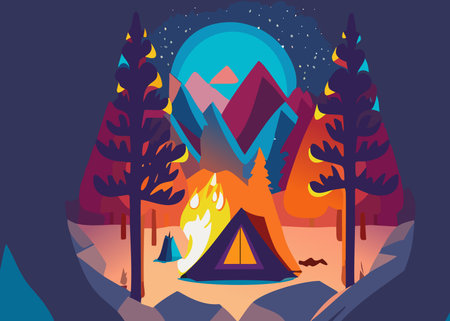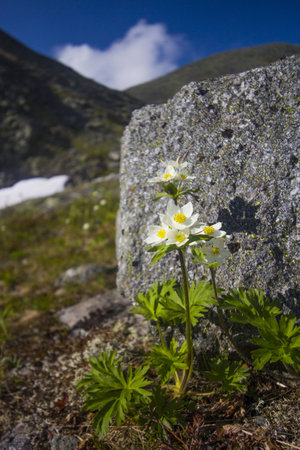1. Understanding US-Specific Hazards
When choosing a shelter site in the United States, it’s important to know the natural hazards that are common in different regions. These hazards can affect your safety and comfort, so picking the right spot is more than just finding a flat place to sleep. Let’s explore some of the most significant hazards you might face and what to consider for each.
Tornadoes
The Midwest and Southeast, also known as Tornado Alley, see frequent tornado activity, especially in spring and early summer. If you’re camping or building a shelter in these areas, avoid open fields or exposed hilltops. Instead, look for low ground (but not flood-prone spots) and keep away from large trees or loose debris that could become projectiles.
Quick Tips:
- Avoid wide-open spaces.
- Don’t set up under old or damaged trees.
- Know where the nearest sturdy building or ditch is for emergencies.
Earthquakes
The West Coast, especially California and parts of Alaska, is prone to earthquakes. When selecting a shelter site here, avoid areas near cliffs, steep slopes, or beneath rock outcroppings. Falling rocks and landslides are real risks after even minor tremors.
Quick Tips:
- Stay clear of unstable hillsides.
- Avoid camping directly under tall cliffs or rocky overhangs.
- Check for loose debris above your chosen spot.
Wildfires
The Western US, particularly during late summer and fall, faces wildfire dangers. Dry brush and forests can ignite quickly. Always check local fire warnings before heading out. Choose an area with minimal dry grass or deadwood nearby, and never camp downwind of thick forests during high-risk times.
Quick Tips:
- Select sites with green vegetation over dry brush.
- Keep at least 15 feet clear space around your shelter if possible.
- Be aware of current fire bans and alerts.
Flash Floods
Southwest deserts and many mountainous areas across the country can experience sudden flash floods, especially after heavy rain—even if it’s miles away. Avoid dry creek beds (arroyos), low-lying valleys, and canyon floors when picking a site.
Quick Tips:
- Never camp in a dry wash or at the base of a canyon wall.
- Look for higher ground that offers a quick escape route if water rises unexpectedly.
- Be alert to changing weather conditions upstream as well as overhead.
Regional Hazard Overview Table
| Region | Main Hazards | Shelter Site Considerations |
|---|---|---|
| Midwest & Southeast | Tornadoes, Flash Floods | Avoid open fields; stay away from flood-prone lowlands; seek sheltered low ground (not gullies) |
| West Coast (CA/AK) | Earthquakes, Wildfires | Avoid cliffs/slopes; keep distance from dense brush; check for falling rock risks |
| Southwest Deserts | Flash Floods, Extreme Heat | Avoid arroyos; choose elevated sites; look for shaded areas (if safe) |
| Northern Rockies & Pacific NW | Landslides, Wildfires | Avoid ravines/slopes; clear brush from area; have escape routes planned |
This quick guide helps you identify potential dangers based on location so you can pick a safer shelter spot wherever your adventure takes you in the US.
2. Considering Regional Weather Patterns
When choosing a shelter site in the United States, it’s essential to think about the local weather patterns that can affect your safety and comfort. America’s diverse climate zones mean you could be facing anything from heavy snowstorms in Minnesota to blazing desert heat in Arizona or hurricane threats on the Gulf Coast. Knowing what kind of weather is common where you are helps you pick a spot that keeps you protected and as comfortable as possible.
How Different US Regions Affect Shelter Choices
| Region | Common Weather Hazards | Shelter Site Tips |
|---|---|---|
| Northeast & Midwest | Blizzards, ice storms, heavy rain | Choose higher ground for drainage, avoid low spots that collect snow and water, look for natural windbreaks like thick trees or hills |
| Southeast & Gulf Coast | Thunderstorms, hurricanes, flooding | Stay away from rivers and streams, avoid low-lying areas, find sturdy shelter away from tall isolated trees (lightning risk) |
| Southwest & Desert Areas | Extreme heat, flash floods, limited shade | Seek natural shade (rocks or vegetation), avoid dry washes (arroyos) that can flood fast, use light-colored materials to reflect heat |
| Pacific Northwest & Northern California | Rain, cold winds, wet ground | Look for sites with good drainage, avoid depressions where water pools, find overhead cover if possible (dense trees or natural shelters) |
| Mountain Regions (Rockies & Appalachians) | Sudden temperature drops, high winds, snow even in spring/fall | Avoid ridgelines exposed to wind, pick spots with natural wind protection (boulders or thickets), consider sun exposure for warmth during the day |
What to Watch Out For by Season
- Winter: Deep snow can make camping tough—look for sheltered spots out of the wind and off icy slopes.
- Spring: Melting snow can cause sudden flooding; avoid riverbanks and low-lying meadows.
- Summer: In hot regions, prioritize shade and airflow. In storm-prone areas, be mindful of flash flood zones.
- Fall: Early freezes happen in many northern states. Make sure your site has some protection from wind and moisture.
Your Comfort Matters Too!
Packing the right gear is important, but picking a smart shelter site based on weather patterns can make a huge difference—especially for women who may feel the cold more easily or want extra peace of mind during severe weather. Taking a few minutes to understand what Mother Nature might throw your way is one of the best ways to stay safe and comfortable outdoors.

3. Evaluating Terrain Features
When choosing a shelter site in the US, understanding the unique features of different landscapes is essential for your safety and comfort. The United States has a wide range of terrains—from rugged mountains to arid deserts, dense forests, and dynamic coastlines. Each environment presents its own set of challenges and opportunities. Here’s how to evaluate terrain features and pick the best spot for your shelter.
Mountains
Best Spots
- Gentle slopes that are above valley floors but below ridgelines—these offer drainage while avoiding exposure to wind and lightning.
- Areas protected by natural windbreaks like boulders or tree stands.
Worst Spots
- Ridgetops (exposed to strong winds and lightning).
- Valley bottoms (cold air settles here at night; risk of flash floods).
- Loose scree or unstable rock faces (risk of falling debris).
Deserts
Best Spots
- Shaded areas near large rocks or under sparse trees—these provide relief from sun and heat.
- Slightly elevated ground to avoid flash flood zones.
Worst Spots
- Dry washes or arroyos—even if dry, these can flood quickly during rainstorms miles away.
- Open flat areas with no shade or wind protection.
Forests
Best Spots
- Campsites on firm, level ground away from dead branches (“widowmakers”) overhead.
- Near water sources but not too close (about 200 feet away is ideal) to avoid insects and flooding.
Worst Spots
- Dense brush (hard to set up camp and more bugs).
- Beneath large, dead trees or leaning limbs.
Coastlines
Best Spots
- Sandy spots above the high tide line and away from cliffs prone to erosion or landslides.
- Sites protected by dunes or vegetation as windbreaks.
Worst Spots
- Bases of cliffs (risk of falling rocks and waves).
- Tide flats or anywhere below the high tide mark—danger of flooding as tides rise.
Quick Guide: Shelter Sites by Terrain
| Terrain Type | Best Locations | Avoid These Areas |
|---|---|---|
| Mountains | Sheltered slopes, below ridges, near windbreaks | Ridgetops, valley bottoms, unstable slopes |
| Deserts | Shaded, elevated ground near rocks/trees | Dried washes/arroyos, open sun-exposed flats |
| Forests | Clearings on firm ground away from dead trees/branches, near water but not too close | Beneath dead trees, thick brush, right next to water sources |
| Coastlines | Sandy spots above high tide line, protected by dunes/vegetation | Bases of cliffs, tide flats, below high tide mark |
No matter where you are in the US, evaluating your surroundings carefully helps you choose a shelter site that keeps you safe from weather extremes and environmental hazards while making your stay more comfortable.
4. Avoiding Environmental Risks
When picking a shelter site in the U.S., it’s important to recognize and avoid certain environmental hazards that are common in different regions. These risks aren’t always obvious, so taking a moment to look around can keep you safer and more comfortable.
Know Your Area: Common U.S. Environmental Hazards
| Hazard | Where It’s Common | What to Watch For |
|---|---|---|
| Flooding | Low-lying areas, riverbanks, valleys, coastal zones | Muddy or soft ground, water marks on trees, proximity to streams or rivers |
| Landslides/Mudslides | Steep hillsides, mountainous regions (especially after rain) | Loose soil, tilted trees, recent slide scars on slopes |
| Falling Trees/Limbs (“Widowmakers”) | Forested areas nationwide (especially after storms or drought) | Dead branches overhead, leaning or damaged trees nearby |
| Wildfire Risk | Drought-prone western states, forests with lots of dry brush | Dry grass/brush, recent burn scars, high winds during fire season |
| Tornadoes & Severe Storms | Central US (“Tornado Alley”), Southeast during hurricane season | Lack of natural windbreaks, exposed hilltops or open fields |
How to Spot and Avoid Trouble Spots
- Avoid Low Ground: Pitches and dips in the land can collect water fast during rainstorms. Look for slightly elevated spots instead.
- Stay Back from Slopes: Don’t set up right below a hillside or cliff. Mudslides can happen quickly if the ground gets too saturated.
- Look Up Before Settling Down: Scan above for dead branches or precarious trees—these can fall without warning.
- Watch for Fire Risks: In dry areas, clear away flammable material around your site. Never build a shelter in thick brush if wildfire danger is high.
- Shelter from Wind and Storms: Use natural barriers like large rocks or clusters of sturdy shrubs for wind protection. Avoid open plains if severe weather is forecasted.
Sensitive Terrain? Think Twice!
If you’re near wetlands, animal trails, or areas with fragile plants (like desert cryptobiotic soil), move on to sturdier ground to protect both yourself and the environment.
5. Proximity to Resources and Safety
When you’re choosing a shelter site in the US, thinking about how close you are to important resources and potential hazards is key for both comfort and safety. Here’s what to keep in mind:
Essential Resources: Water and Firewood
Being near water makes camping life much easier — you’ll need it for drinking, cooking, and cleaning. But don’t set up right on the water’s edge; stay at least 200 feet away to help prevent erosion and avoid attracting animals that come to drink.
Firewood is also important if you plan to have a campfire (check local fire regulations first!). Collecting wood nearby saves time and energy, but be sure not to strip the area bare. Use only downed wood, never live branches.
| Resource | Ideal Distance | Why It Matters |
|---|---|---|
| Water Source | 200 ft (about 60 meters) | Avoids contamination & reduces animal encounters |
| Firewood | Within a 5-minute walk | Convenience without damaging the environment |
Wildlife Awareness
The US has diverse wildlife, from deer and raccoons to bears and snakes. Always research what animals are common in your region. Store food in bear-proof containers where needed, and keep your site tidy to discourage curious critters. In the Southwest or Southeast, be alert for venomous snakes or scorpions; shake out shoes and bedding before use.
Common Wildlife Hazards by Region
| Region | Potential Wildlife Concern | Precaution Tips |
|---|---|---|
| West (Rockies, Pacific NW) | Bears, mountain lions | Use bear canisters, hang food, avoid scented items in tent |
| Southeast/Southwest | Snakes, scorpions | Watch where you step, check gear before use |
| Northeast/Midwest | Ticks, raccoons, skunks | Wear long sleeves/pants, secure trash/food at night |
Bugs & Bites: Ticks and Insects
Ticks can carry Lyme disease in parts of the Northeast and Midwest. Mosquitoes are common nationwide during warmer months. Choose a breezy location if possible — bugs don’t love wind! Wear insect repellent with DEET or picaridin, use permethrin-treated clothing, and do tick checks after hiking or before bedtime.
Bite & Bug Prevention Tips:
- Avoid setting up near standing water (mosquito breeding ground)
- Pitched ground? Check for ant hills or wasp nests before setting up your tent
- If camping in tall grass or woods, tuck pants into socks for extra protection from ticks
- If you’re sensitive to bites or allergies, pack an EpiPen or antihistamines just in case
By keeping these resource distances and safety tips in mind, you’ll create a safer and more comfortable shelter spot wherever your US adventure takes you!
6. Cultural and Legal Considerations
When choosing a shelter site in the US, it’s important to understand the unique cultural and legal factors that might affect where you camp or build a shelter. Knowing these rules helps you stay safe, avoid fines, and respect both nature and local communities.
Understand ‘Leave No Trace’ Principles
‘Leave No Trace’ is a set of outdoor ethics widely respected across the US. Following these guidelines protects natural spaces for everyone. Here’s a quick overview:
| Principle | What It Means |
|---|---|
| Plan Ahead & Prepare | Know the area, weather, and rules before you go. |
| Travel & Camp on Durable Surfaces | Use existing trails and campsites; avoid fragile areas. |
| Dispose of Waste Properly | Pack out all trash; bury human waste away from water sources. |
| Leave What You Find | Don’t disturb plants, rocks, or historical items. |
| Minimize Campfire Impact | Use stoves or established fire rings; follow fire regulations. |
| Respect Wildlife | Observe animals from a distance; store food securely. |
| Be Considerate of Others | Keep noise down; give others space. |
Private Land Regulations vs. Public Land Usage
The US has many types of land ownership. Always know whose land you are on before setting up your shelter:
| Type of Land | Main Rules for Shelter Sites |
|---|---|
| Private Land | You must have permission from the owner before entering or camping. Trespassing can lead to legal trouble or fines. |
| National Parks & Forests (Public Land) | Campsites may be designated; check for permits, fire bans, and special rules about where you can camp or build shelters. |
| Bureau of Land Management (BLM) Areas | Often allow dispersed camping but still require following posted regulations and respecting closures. |
| State Parks & Wildlife Refuges | Rules vary by state—look up guidelines ahead of time. Some areas do not allow overnight stays outside official campgrounds. |
Common US Laws and Customs to Remember:
- No Trespassing Signs: Always obey them—they are legally binding.
- Campsite Permits: Some public lands require permits for overnight stays. Apply early during busy seasons!
- No Camping Zones: Many cities and some rural areas prohibit camping near roadsides, waterways, or certain landmarks. Check maps and signs for restrictions.
- Cultural Sensitivity: In regions with Native American reservations or sacred sites, additional rules may apply. Research the area or ask local rangers if unsure.
- Packing Out Trash: It’s considered rude—and sometimes illegal—to leave trash behind, even biodegradable items like fruit peels.
- Drones & Technology: Some parks ban drones or have strict quiet hours to preserve peace for all visitors.
Your Checklist Before Setting Up Shelter:
- Check who owns the land (private/public/tribal).
- Look up local camping laws and permit requirements.
- Follow ‘Leave No Trace’ principles at all times.
- If unsure about any rule, call a ranger station or visitor center for guidance.
- Always have a backup plan if your chosen site is not allowed!
Selecting a shelter site isn’t just about safety—it’s also about being a respectful steward of the land and community around you. Knowing the cultural and legal landscape will help you enjoy your adventure while staying on good terms with nature and neighbors alike.


